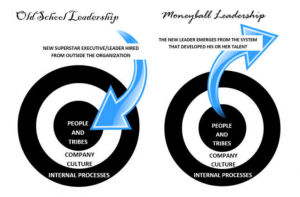Moneyball Leadership: Let’s Rethink Where We Get Our Top Leaders
by Donn LeVie Jr.
In 2017, the Harvard Business Review addressed the stark reality of bringing in outsiders, or the big-game big-name players, to run an organisation. Organisations invest a lot of time and money in hiring the right CEO or senior executive to set a vision and make the changes in their company. Yet within the first 18 months, there’s a 50% chance the executive will leave the organization. This failure comes with enormous costs, not only in disruption to the organisation, but financially too. One estimate puts the cost at 10 times the executive’s salary – sometimes more.
It doesn’t sound like any of those board members read Michael Lewis’ book, Moneyball, or saw the Brad Pitt movie of the same name. Moneyball related the story of an Oakland A’s baseball team that exploited – disrupted is a better descriptor – industry market inefficiencies, overcame the loss of several superstar players, and then had one of the best seven-year runs in franchise history.
What the Oakland A’s did was trade the idea of a team loaded with superstar athletes for one that focused on building a roster of talent that had balance, depth off the bench (team depth), and player versatility (skilled at other positions). The Boston Red Sox and Houston Astros followed that approach, and each ended up winning the World Series.
Moneyball Leadership: It’s Where Global Leadership Development is Headed
According to the latest market research report by Technavio, the global corporate leadership training market 2018-2022 is expected to post a compound annual growth rate (CAGR) of nearly 15 percent during the forecast period. Organisations are increasingly spending on leadership training year-over-year, as it is more cost-effective for a company to fill senior positions from within its hierarchy than hire an external resource. That’s Moneyball Leadership (see Figure 1). They also are fast recognising leadership training as essential to a company’s efficient functioning and financial health.
In Richard Steinberg’s book, Governance, Risk Management, and Compliance, he cites a study of S&P 500 non-financial companies over a 20-year period that found companies that appoint only internal candidates to CEO positions significantly outperform those who bring in outsiders to the C-Suite. The cost of attracting an external candidate is significantly higher – as much as 65 percent – to cover salary, bonus, equity incentives, and golden parachutes. Nearly 66 percent of CEOs recruited externally are gone before their fourth anniversary.
Hire the talent, teach them the system, grow them into leaders who understand the people, the culture, and the processes within the organisation. Such a process has a higher probability of transparency, better risk management, and complete compliance. Ensure new leaders understand that building connections with others takes precedence instead of claiming authority over them because employees can’t have faith in them without belief and trust in who they are. Grow your own C-suite talent so they can more easily put together consecutive winning fiscal seasons rather than using the Wall Street score card of quarter-by-quarter results.
The author, Donn LeVie Jr., is an executive positioning and influence strategist and an award-winning author.


